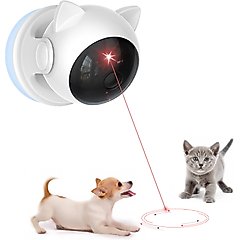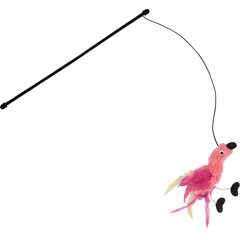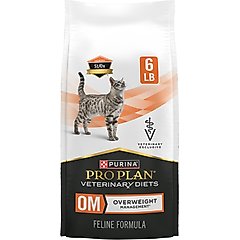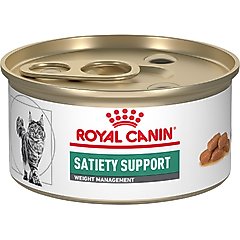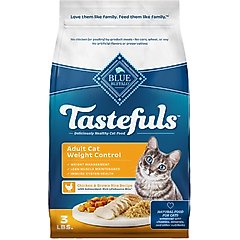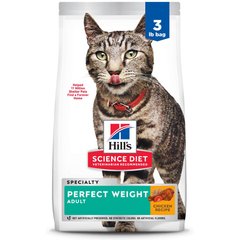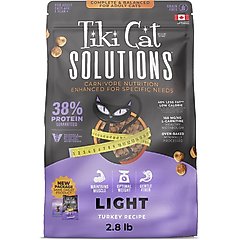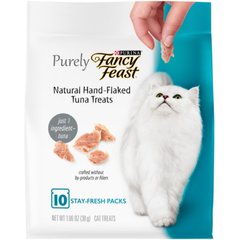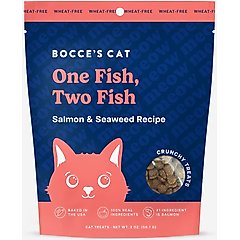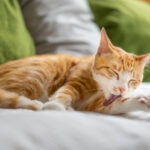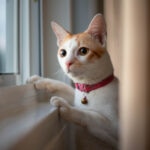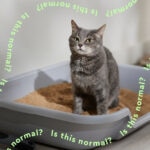How To Help Your Cat Lose Weight
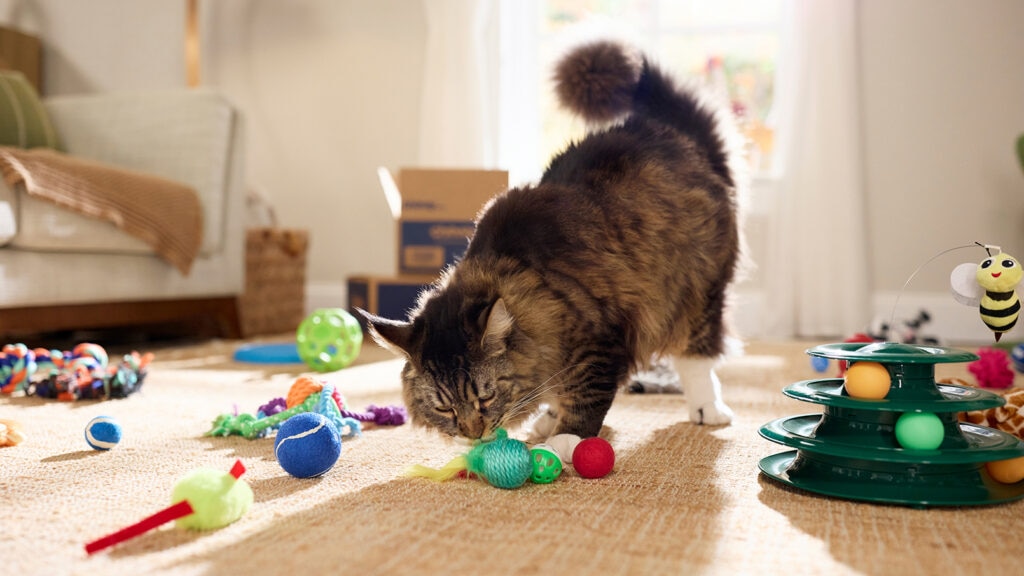
Photo by Chewy
As cute as a little chonk may be, cats who carry excess weight can end up dealing with all sorts of side effects. That said, if your fur friend looks a little pudgy these days, it’s likely a good time to step back and assess their food intake and exercise levels.
Ahead, learn everything you need to know about how to help a cat lose weight, including food recommendations from veterinarians and tips for upping your cat’s physical activity.
Key Takeaways
- Assess your cat’s weight by using the body condition score (BCS), a 1 to 9 scale that visually evaluates a cat’s body shape and fat distribution.
- Partner with your vet to create a safe, tailored weight-loss plan for your kitty.
- Stick to high-protein, low-calorie meals and portion control to keep them full and on track.
- Make daily playtime a must; 15–20 minutes of fun can boost their mood and health.
Does My Cat Need To Lose Weight?
A typical healthy cat weighs between 8 and 10 pounds. However, this can vary slightly depending on both the sex—male cats weigh more than female cats—and breed, says Carly Fox, DVM, senior veterinarian at Schwarzman Animal Medical Center, in New York, New York.
A better way to determine whether your cat needs to lose weight is to measure their body condition score (BCS), which ranges from 1 (emaciated) to 9 (severely obese), Dr. Fox says. This numeric system is based on a visual assessment, and healthy cats should land between 4 and 5.
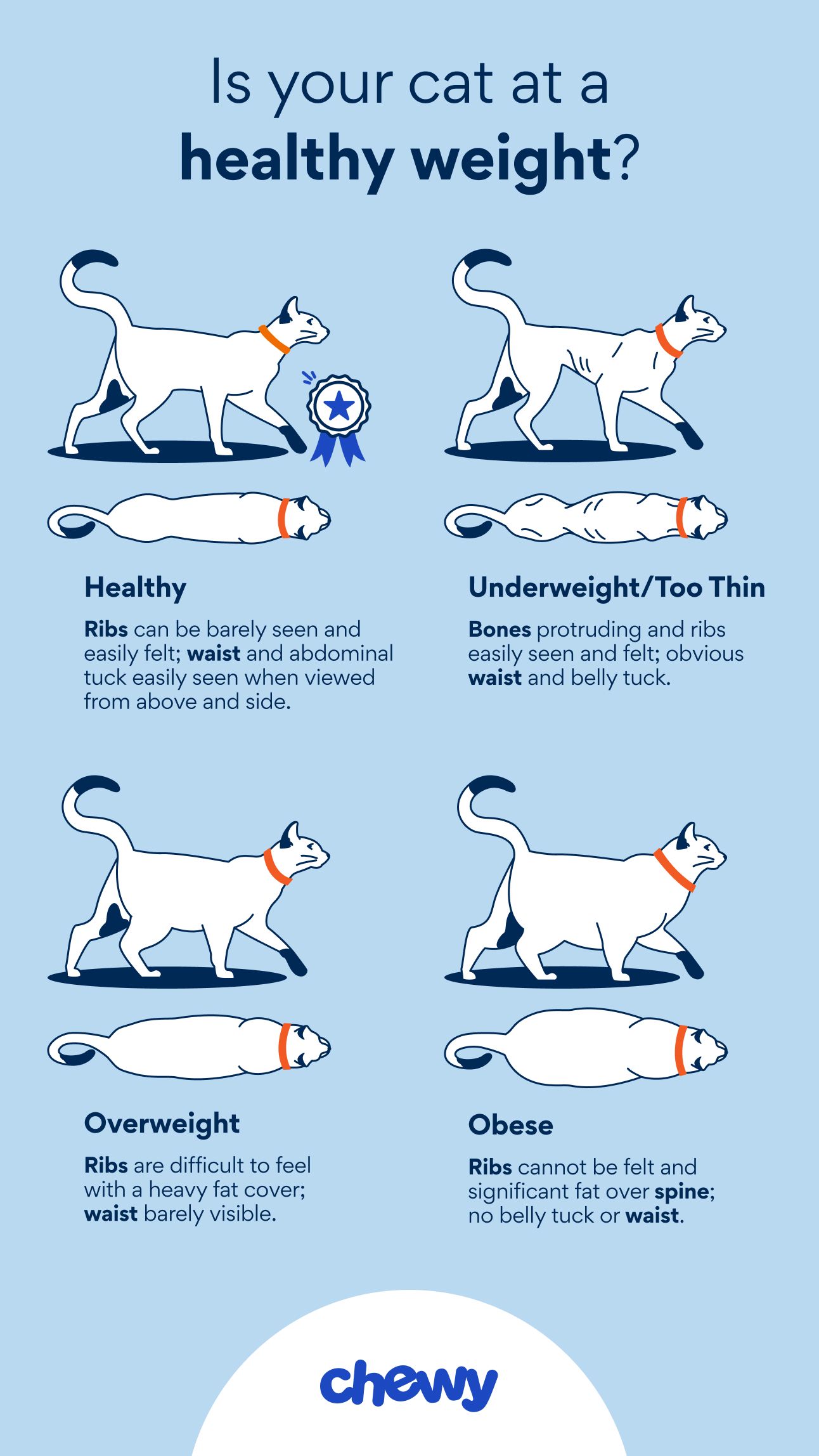
Photo by Chewy
In cats with a healthy weight:
- You can feel their ribs without pressing hard (but they shouldn’t be protruding).
- They have a defined waist when viewed from above.
- They should have a tucked abdomen when looking at them from the side.
Cats who are overweight or obese, however, have:
- No visible waist
- A sagging belly
- Excess fat around their ribs
Did You Know? According to the Association for Pet Obesity Prevention, 61% of cats in the U.S. are overweight or obese.
How Do I Help My Cat Lose Weight?
If your cat is carrying excess weight, helping them shed extra pounds can dramatically improve their quality of life and longevity. Here’s what to do.
Meet With Your Vet
As your first step, make an appointment with your veterinarian, who can create a weight-loss plan.
Together, you can determine how much weight your cat needs to lose and create a healthy, safe, effective, customized approach to putting your cat on a diet.
Put Your Cat on a Vet-Recommended Diet
Often, cat weight loss requires a vet-recommended diet for weight management. Some diets are prescription, while others are non-prescription but aim to help cats lose weight.
These weight-loss foods for cats are higher in protein, complete and balanced (meaning they have all the nutrients your cat needs), and lower in calories to help keep hungry bellies fuller for longer. You can find vet-recommended cat food for weight loss ahead.
Pro Tip: Colleen Guilfoyle, DVM, national shelter medicine veterinarian at Best Friends Animal Society in Kanab, Utah, recommends tracking your cat’s weight-loss progress with regular weigh-ins once every week or two to see if any adjustments are needed.
Monitor Your Cat’s Calories
Another option is to reassess how much food you’re giving your cat at each meal, says Dr. Guilfoyle.
All cat food labels have feeding instructions to ensure your cat isn’t under- or overfed. Feeding them too much kibble—a problem that occurs when you don’t measure food or you let them “free feed”—can result in weight gain.
Pro Tip: A slow feeder, like the Catstages Non-Skid Slow Feeder Cat Bowl, can prevent your cat from scarfing down food, which can improve their satiation.
Recommended Product
Increase Your Cat’s Activity Level
Cats require both mental and physical exercise every day to remain healthy and happy. This can be done by chasing balls, playing with laser pointers, enjoying feather toys, or playing with interactive puzzles.
Aim for 15–20 minutes of physical activity every day, Dr. Fox says.
Some popular interactive cat toys include the hands-free PawsPik Suction Cup Cat Laser Toy, the Lovely Caves Interactive Cat Ball Cat Toy with Tail, and the KONG Active Feather Teaser Cat Toy.
Recommended Products
What Is the Best Cat Food for Weight Loss?
Key features of cat weight-loss food include adequate protein, balanced nutrition, and lower calories. And the best cat foods for weight loss are vet-prescribed weight-loss diets, Dr. Guilfoyle says, because “they’re designed to help cats feel full on fewer calories.”
Wet and dry cat food both have their pros and cons.
For example, “wet food is usually lower in calories per serving and adds moisture, which can help cats feel full,” while “dry food is easier to portion and store but can be higher in calories,” Dr. Guilfoyle explains.
Vet-recommended cat foods for weight loss include:
- Dry prescription cat weight-loss food: Purina Pro Plan Veterinary Diets OM Overweight Management Dry Cat Food
Recommended Product
- Wet prescription cat weight-loss food: Royal Canin Veterinary Diet Adult Satiety Support Weight Management Thin Slices in Gravy Canned Cat Food
Recommended Product
- Non-prescription cat weight-loss food: Blue Buffalo Tastefuls Weight Control Dry Cat Food, Hill’s Science Diet Perfect Weight Management Dry Cat Food, Tiki Cat Solutions Light Turkey Grain-Free Dry Cat Food
Recommended Products
How Do I Maintain My Cat’s Healthy Weight?
If your cat has lost enough weight, follow these steps for a healthy, happy, trim feline:
- Switch them back to carefully measured regular cat food.
- Continue monitoring and tracking their weight periodically—about once every month.
- Ensure they’re getting 15–20 minutes of exercise each day.
Why Should My Cat Lose Weight?
Just like people, cats at ideal weights are less apt to develop disease, while overweight cats are more likely to experience health complications, including:
- Diabetes
- Arthritis
- Urinary tract infections (UTIs)
- Chronic constipation
- Heart disease
- Liver issues
- Lower energy levels
- Impaired mobility
- Inability to groom effectively
- Reduced longevity
- Lower quality of life
And according to the Association for Pet Obesity Prevention, as little as 2 pounds above your cat’s ideal weight can put them at risk of developing serious medical conditions.
“Being at a healthy weight improves their quality of life [and] longevity and decreases the need for significant medical care and therefore veterinary expenses,” Dr. Fox says.
The bottom line, says Dr. Guilfoyle, is keeping your cat at a healthy weight helps them live longer and feel better.
FAQs About Cat Weight Loss
Q: If my cat is on a weight-loss plan, can I still give them treats?
A: Yes, but in moderation. There are many low-calorie treats available for cats that you can still give them while they are dieting. Also, you can use some of their kibble as treats throughout the day. Opt for high-protein, single-ingredient treats, like Purina Fancy Feast’s Purely Natural Cat Treats or Bocce’s Bakery’s One Fish, Two Fish Treats.
Recommended Products
Q: How can I get my indoor cat to lose weight?
A: Measure their food for every meal according to the on-label instructions. Some veterinarians might recommend a prescription diet or a specific weight-loss food. Cats should also get 15–20 minutes of physical exercise every day.
Q: How long does it take cats to lose weight?
A: Cat weight loss should be slow and steady, usually about 0.5–2% of their body weight per week.
For many cats, it can take six months to a year to reach their goal weight. Losing weight too fast can be dangerous and can lead to liver problems, especially in obese cats, so always follow a vet-guided plan.
Q: How do I discourage my cat from begging for more food?
A: Stick to a consistent feeding schedule and avoid giving in to begging, even with treats. Instead, redirect their attention with play or a food-dispensing cat toy to keep them mentally stimulated.

